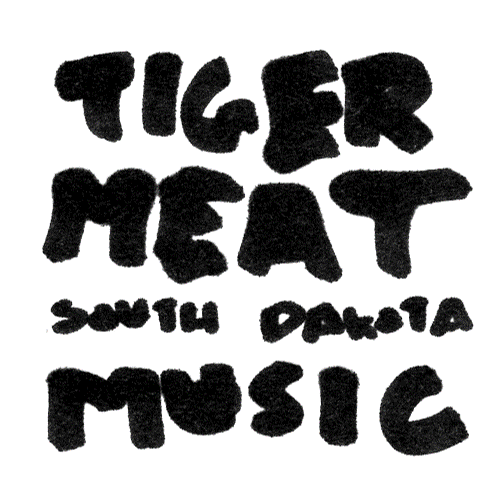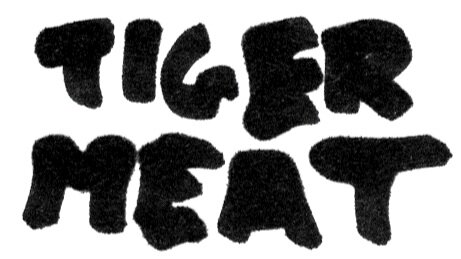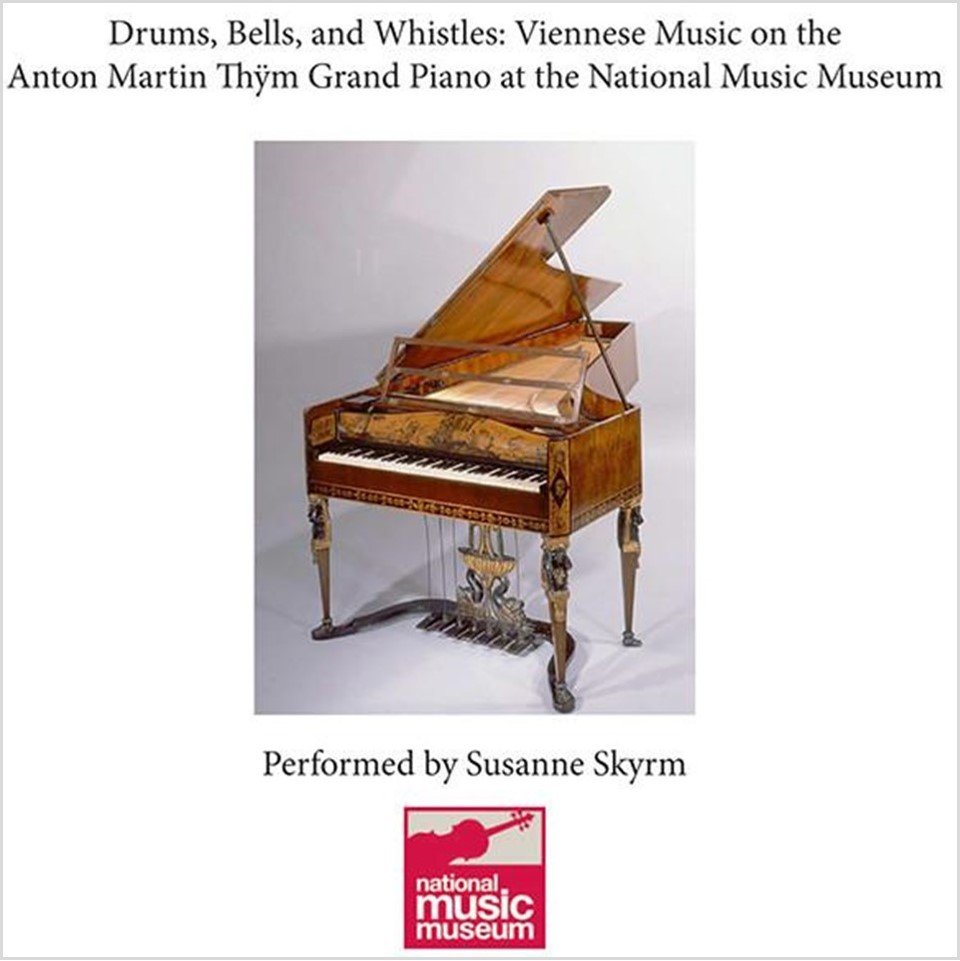Susanne Skyrm
Drums, Bells, and Whistles
2016 | Classical
— track 1: “The Naval Battle of Trafalgar and the Death of Lord Nelson”
Susanne Skyrm: The National Music Museum started with Arnie B. Larson, who lived in Brookings at the time. He taught public school music and he liked to collect instruments as a hobby, so he tuned pianos on the weekend to get enough money to buy these things, and then he’d go out and buy mostly turn-of-the-century band instruments. But he also bought a lot of non-Western instruments. The story is that during the war he would trade tea and Spam to the Brits in exchange for instruments. So his house filled up with instruments. At one point he had, like, 2,500 instruments. His son, André, remembers growing up and there was no room in their bedrooms. All they had was a table and a chair and a bed, and the rest of the room was filled up with instruments. Then as [Arnie] got older, I guess he decided, “I gotta do something with this collection.” He offered it to SDSU but they didn’t want it, so he offered it to USD and they said, “Sure we’ll take it.” So they moved the whole collection down to Vermillion in a cattle truck. They were given one room in this Carnegie Library here on campus for the instruments. Arnie was the first director, they had all these instruments on display and he would take them to the schools and demonstrate them to the kids. He was famous around here because he did that. Everybody remembers Arnie. Anyway, his son André finished his education, then he came back and took over the directorship of the museum, and really under him the museum expanded to what it is today. He had a gift for sniffing out really valuable instruments, and for raising the money to buy them. So he collected, for example, the Northern Italian string collection we have here that has Amatis and the Stradivaris. He also got a number of wonderful keyboards, including the Thÿm and other pianos and harpsichords that we have. He really built up the collection into a world class museum setting. He eventually took over the whole Carnegie building. There’s some really “out there” instruments. There’s a whole collection of non-Western instruments including a Javanese Gamelan orchestra, which is phenomenal. Margaret Ann Everist of Sioux City gifted the purchase funds and André commissioned it and had it built for the museum. I was one of the people who unboxed the thing when it came, it was just thousands of boxes of these instruments. There’s something funny, it’s called a flabongo, it’s a bongo drum in the shape of a flamingo, just a novelty thing. They have the original trumpet from Sgt. Pepper’s Lonely Hearts Club Band with the heart in it, that’s there, it’s not playable, but it’s a conversation piece. They have the Bill Clinton saxophone which is painted red, white, and blue with stars and all that. The museum has just grown to the point where there was no more room for anything and a lot of these instruments were being stored in places that weren’t really appropriate for storage. So the board and André talked for years about building an extension onto the museum. They closed in 2019 and they’ve been working on that extension ever since. It’s done now, but they haven’t yet gotten the exhibits going. In the meantime they have a temporary exhibit that’s open on limited days and hours. Right now it’s a collection of electronic instruments, mostly guitars. André got really interested in guitars at the end of his life too, and he collected all these guitars from country singers and rock and roll people. So it’s really famous, I mean, if you go anywhere in the musical instrument world and you say you’re from Vermillion, everybody knows where that is.
//\\//\\//
Both my parents were musicians. My dad was a pianist and organist, and he was eventually the chair of the liberal arts college in Caldwell, Idaho, the College of Idaho. My mother taught piano, so I kind of came about it naturally. I was very passionate about piano from day one. So I studied all through school, I went to the College of Idaho and majored in music, and then I went on to the University of Cincinnati, did a Master’s degree in piano performance there. After that I went to Milan, Italy to study with a teacher there, her name was Ilonka Deckers-Küszler, so I was fortunate enough to get to stay in Italy for a long time, I was there for almost eight years. Then my father was dying of colon cancer so I came back to Idaho and I took some of his classes for him because he wasn’t able to teach. Then after that I decided I needed to get a doctorate. I started out at Indiana, but that didn’t work too well, so then I transferred to the University of Colorado at Boulder and finished a Doctor of Musical Arts there in piano performance. I always had been interested in Spanish and Hispanic music, and Latin American music, and [at Boulder] I did some work for my thesis project on Spanish music. Then I got the job at the University of South Dakota and came here. That was in 1988, ancient history [laughs].
Shortly after I arrived, [the National Music Museum] got this piano, it was a Portuguese piano built in 1767 by Manuel Antunes. It was in perfect shape because it had been sitting in a closet for hundreds of years. It’s an important instrument because the action of this piano was like the action of the first pianos that were ever built. Bartolomeo Cristofori in Florence built the first piano, so this had the same action as one of his pianos, which, there’s not too many of these that survived, actually. So museum people didn’t really want the Antunes to be played very much because they didn’t want playing to consume the mechanism, but I was the first one to give a concert on it. It fit in really perfect with my interest in Iberian music, I played some Portuguese and Spanish 18th century pieces on it. Then later I was allowed to make one of three recordings ever made on this instrument, so that’s the Treasures of Iberian Keyboard Music [album from 1997]. So that was really interesting, because, coming to South Dakota, I didn’t think — you know, “How would I ever get involved with Spanish music here?” But I did.
I was always interested in modern piano performance, I wasn’t really interested in period pianos when I was in school, but once I got here, and we have so many wonderful instruments at the National Music Museum, some of which are playable, then I got really interested in period pianos. So that led to the Drums, Bells, and Whistles album on the Anton Martin Thÿm piano, which has seven pedals. It’s quite the instrument. Two of the pedals are the same as what we have on modern pianos: the damper pedal which raises the dampers, and the una corda which in this case is a real una corda, it only strikes one string when you put it down versus the modern piano which now has three strings for every note except for the bass notes. And then there are a number of novelty stops: There are two moderator pedals. The moderator inserts a piece of cloth between the strings and the hammer, so when you play it, it sounds kind of far away and distant, and there’s a double moderator which has two layers of cloth that makes it sound even further away. It’s really a wonderful effect and I wish modern pianos had that, because it gives you this kind of longing sound that’s just so beautiful. And then there’s the bassoon pedal which puts a piece of parchment on the lower strings, it’s just in the bass, so they buzz when you play it, it has this buzzy sound, it’s pretty funny. And then there’s the lute pedal, which, there’s a bar that hangs over the strings and when you deploy the lute stop the bar drops down, and it has this fringe made of silk, so it of dampens the strings and gives it a harp-like effect or lute-like effect. And then the best pedal of all is the drums and bells. That is attached to a mallet which hits the soundboard on the underside of the piano, so that makes the drum. And then there are three hammers inside these concentric bells inside piano itself, so that strikes at the same time [as the drum], although you can just do the bells if you touch the pedal lightly enough. But yeah, that’s a lot of fun.
This was a big deal, when this piano was built around 1815. Pianos had just been invented in the last century, and they only started becoming popular at the end of the 18th century and into the 19th century. With the French Revolution and the rise of the middle class, there was more interest in music, and people wanted to have music in their home, but they didn’t necessarily know a lot about music, so having these pianos that had all these weird things on them was appealing to the middle class that didn’t know very much. So there was a lot of music written that had these Janissary stop things, the drums and bells. It was mostly salon music, and battle pieces, and storm pieces. It’s kind of a fun, interesting moment in history. The whole idea of Janissary bands became very popular in the late 18th century when they heard the Turkish bands with all their brass instruments and their drums, and people really liked that. So piano manufacturers started putting those effects in their instruments, and then it just grew from there. It didn’t last very long, I imagine by the middle of the 1800s that sort of thing had died out, but there was quite a bit of it at the beginning of the century.
None of the famous composers [wrote music for this kind of piano], they had better taste than that. The only one that did that I know of is — Beethoven wrote a piece called “Wellington’s Victory” and there’s a piano score for that, and there’s actually some symbols written in there to use the drum for the cannon shots. But as far as who was writing for this, it was mostly minor composers that no one’s ever heard of, like the guy that wrote the battle piece that I played [Johann Baptiste Wanhal]. But there were a lot of people that were writing, especially for women. Young ladies in a certain social class were expected to be able play an instrument, so the piano was usually something they could do with a modicum of success, and just having these sound effects made it more interesting for them to play these things, and of course they weren’t very discerning about their musical tastes, and so the market was flooded with these things. Also here in the States, I have a rather large collection of battle pieces that was collected by a professor at Kansas University, he gave them to me after he passed on, and they’re all by American composers. There were pianos here too that had these effects.
I have to say, some of the effects like the moderator effects can be employed, especially in Schubert or Beethoven. Where there’s a “triple p” in Schubert, some pianists think that’s an indication to use the moderator to make it softer. Also Beethoven in the “Hammerklavier Sonata,” he actually wrote “little by little two then all the strings” So there were gizmos, especially on English pianos where you could do that, you could control how many strings you had sounding. But this piano is also a very beautiful instrument in its own right. You can play it without the pedals and it really is a lovely instrument. It’s nice to play pieces that would have been played on it perhaps by Schubert and Beethoven and early 19th century composers. We always like to think, “Hey, maybe Beethoven played it!” It would have been in the right place at the right time. [Anton Martin Thÿm] was in Vienna, I guess there were lots and lots of piano makers at that time. I don’t know a whole lot about him other than that. But the piano itself is really quite beautiful, it’s got all these pen and ink drawings on it and scroll work, and lots of curlicues and decorations.
//\\//\\//
[The music selections on the album] were all from that period [of the piano’s construction], and they were all written by Viennese composers. And I have to say, often the composers did not indicate that you were to use the drums or the bells. Some of them did, some of them wrote little circles underneath the pedal marks or whatever to indicate that, but many times they did not, so it’s kind of your artistic license. When I was looking through [“The Naval Battle of Trafalgar and the Death of Lord Nelson”] it seemed like there were opportunities to use all the effects, so I chose this one. I had a professor from the drama department, Ron Moyer, come in and narrate it for me. That was fun because he couldn’t read music, so he couldn’t just look at the score and know when it was time to talk. So I was playing and then I’d point at him when it was time to say something. That was interesting, but he’s so good. And then the other tunes I chose, again, not because they had any indication that you were supposed to use the drums or bells. Except for the Hummel, that actually has an indication to use the bassoon stop, and it’s a perfect place for it because it’s sort of a stride bass, it sounds like a dance with this crazy bassoon stop there. So I had to do that one because it was already written in there. And then the Nocturnes, I don’t believe there’s any indication there of using pedals, but just the musical effects in there would call for something like the lute stop or the moderators, it just worked.
[The recording process] was interesting. I had to do a lot of takes. It was a hot summer day, or, I think we did it over the course of several nights. When they’d do recordings at the museum, they’d do them after hours, and they had to turn off the air-handling because it would make a buzz. So it’s a hot day, you’ve got no air conditioning, you’re in this concert hall trying to record. The conservator, John Koster, was there and he’d have to come in and tune the piano every so often because it would get out of tune so quickly without the climate control. So it was a challenge. Plus, the other thing was the pedals squeaked, I mean, this instrument’s so old. So there’d be a soft ending on some of these nocturnes and I tried to be really quiet, but when I lifted the pedal it would go, “eeeeeergh!” [laughs] So we tried a couple times to get that out, but it just didn’t work, so I think you can still hear that on the recording.
//\\//\\//
I’m retired and I’m sort of using my time now to do things that I didn’t have time to do when I was working. So I’ve been doing a lot of traveling. Just got back from a trip to Africa which was amazing. Went on safari and came back with 5,000 photos, so I’ve been going through those. And I’m an avid scuba diver, I like to do that, so when I can travel more freely I’ll take that up again. It’s an amazing world down there. No trips in the immediate future. I’m going to Panama in the summer, and hopefully I’m going to Fiji next November to dive. That was supposed to happen last year and it didn't, so hopefully it’ll be able to happen next year. And I’m keeping up with the piano too, but I don’t have any recording projects in the works right now.
Mostly the museum’s philosophy is to not play the instruments because it will wear them down, and they want to preserve them for future generations to study. So one of the things that they do is to try to build replicas as accurately as possible, so that there will be a replica of this instrument that supposedly sounds just like the instrument itself. Once in a while they’ll haul one out and let someone play it. Eugene Fodor gave a concert on the Stradivarius. And there’s a cello, the Amati “King” cello. It was built in 1572 and has paintings of the armorials of Charles IX of France on it, I believe that was featured on the Prairie Home Companion show, they came to Vermillion and featured some of the instruments from the museum. So once in a while they’ll bring something out. But yeah, that’s a hot topic in museum conservation: to play or not to play. [laughs]
Available at the National Music Museum’s webstore.
SUSANNE SKYRM’S ESSENTIAL SOUTH DAKOTA ALBUMS
Transept — Live at the Cathedral (2021)
Rawlins Piano Trio — Attracting Opposites (2013)
SOURCES
Skyrm, Susanne. Interview. By Jon Bakken. 11 Nov. 2021.







